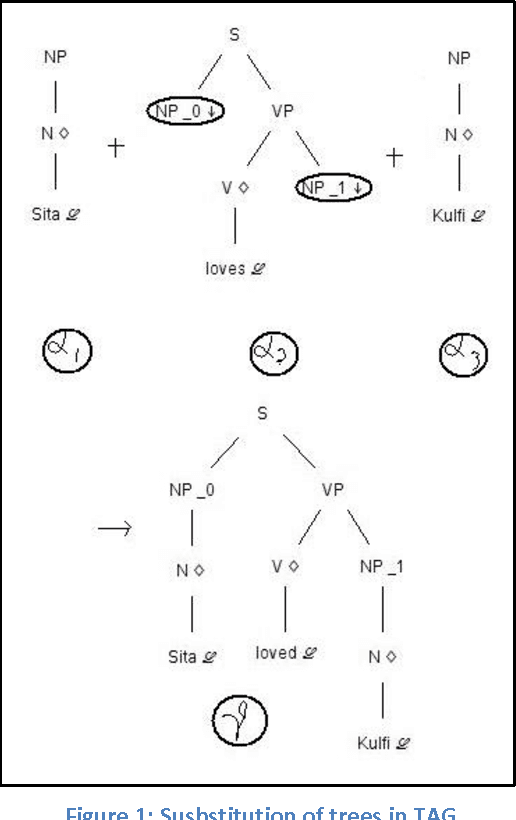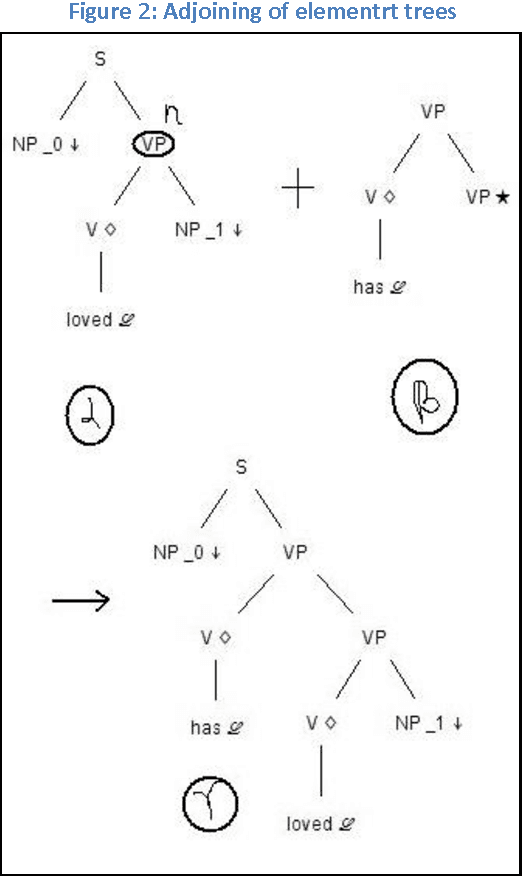S Rajendran
Dependency resolution and semantic mining using Tree Adjoining Grammars for Tamil Language
Apr 19, 2017


Abstract:Tree adjoining grammars (TAGs) provide an ample tool to capture syntax of many Indian languages. Tamil represents a special challenge to computational formalisms as it has extensive agglutinative morphology and a comparatively difficult argument structure. Modelling Tamil syntax and morphology using TAG is an interesting problem which has not been in focus even though TAGs are over 4 decades old, since its inception. Our research with Tamil TAGs have shown us that we can not only represent syntax of the language, but to an extent mine out semantics through dependency resolution of the sentence. But in order to demonstrate this phenomenal property, we need to parse Tamil language sentences using TAGs we have built and through parsing obtain a derivation we could use to resolve dependencies, thus proving the semantic property. We use an in-house developed pseudo lexical TAG chart parser; algorithm given by Schabes and Joshi (1988), for generating derivations of sentences. We do not use any statistics to rank out ambiguous derivations but rather use all of them to understand the mentioned semantic relation with in TAGs for Tamil. We shall also present a brief parser analysis for the completeness of our discussions.
 Add to Chrome
Add to Chrome Add to Firefox
Add to Firefox Add to Edge
Add to Edge